Mosquito-borne dengue fever was rarely a major problem in Bangladesh's coastal districts, but some hospitals are so full of those with the potentially deadly virus that patients are treated on the floor.
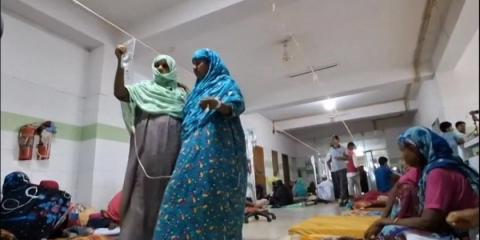
Mosquito-borne dengue fever was rarely a major problem in Bangladesh's coastal districts, but some hospitals are so full of those with the potentially deadly virus that patients are treated on the floor.
In the worst cases, intense viral fevers trigger bleeding, internally or from the mouth and nose. Barisal has recorded nearly half of the 7,500 dengue cases across Bangladesh this year, according to the Institute of Epidemiology, Disease Control and Research. Five people have died there this year with dengue fever, out of 31 deaths recorded across the entire country of some 170 million people.
mitv
Mosquito-borne dengue fever was rarely a major problem in Bangladesh's coastal districts, but some hospitals are so full of those with the potentially deadly virus that patients are treated on the floor.
In the worst cases, intense viral fevers trigger bleeding, internally or from the mouth and nose. Barisal has recorded nearly half of the 7,500 dengue cases across Bangladesh this year, according to the Institute of Epidemiology, Disease Control and Research. Five people have died there this year with dengue fever, out of 31 deaths recorded across the entire country of some 170 million people.
mitv
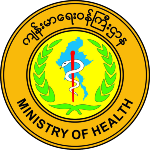
The Ministry of Health continues its ongoing COVID-19 surveillance activities. Within a week from 8:00 PM on June 15, to 8:00 PM on June 22, a total of 2,199 laboratory samples were tested.
The Ministry of Health continues its ongoing COVID-19 surveillance activities. Within a week from 8:00 PM on June 15, to 8:00 PM on June 22, a total of 2,199 laboratory samples were tested.
Of these, 29 new confirmed cases of COVID-19 were identified, resulting in a positivity rate of 1.32%. During this reporting period, there were no severe cases, no patients requiring intensive care, and no deaths due to COVID-19. While there is currently no concerning situation regarding COVID-19 transmission or deaths in the country, it's still essential to follow personal protective measures to prevent infection.
For individuals at higher risk of severe illness and potential death if infected, such as elderly individuals (aged 60 and above), those with underlying conditions like diabetes, chronic lung disease, or cancer, pregnant mothers.
A priority program for COVID-19 booster vaccinations will be implemented, and it's crucial for these individuals to get vaccinated. For more detailed information regarding COVID-19, please visit the Ministry of Health's website at moh.gov.mm.
mitv
The Ministry of Health continues its ongoing COVID-19 surveillance activities. Within a week from 8:00 PM on June 15, to 8:00 PM on June 22, a total of 2,199 laboratory samples were tested.
Of these, 29 new confirmed cases of COVID-19 were identified, resulting in a positivity rate of 1.32%. During this reporting period, there were no severe cases, no patients requiring intensive care, and no deaths due to COVID-19. While there is currently no concerning situation regarding COVID-19 transmission or deaths in the country, it's still essential to follow personal protective measures to prevent infection.
For individuals at higher risk of severe illness and potential death if infected, such as elderly individuals (aged 60 and above), those with underlying conditions like diabetes, chronic lung disease, or cancer, pregnant mothers.
A priority program for COVID-19 booster vaccinations will be implemented, and it's crucial for these individuals to get vaccinated. For more detailed information regarding COVID-19, please visit the Ministry of Health's website at moh.gov.mm.
mitv
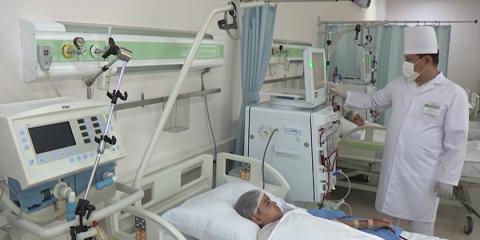
For the first time in the history of Turkmen medicine, local doctors successfully performed a neurosurgical operation on a newborn with a diagnosis of “occlusive hydrocephalus. The patient was a one-month-old child from the Balkan velayat. The operation was performed at a domestic medical institution by Turkmen specialists and was successful. The baby’s condition is assessed as stable.
For the first time in the history of Turkmen medicine, local doctors successfully performed a neurosurgical operation on a newborn with a diagnosis of “occlusive hydrocephalus. The patient was a one-month-old child from the Balkan velayat. The operation was performed at a domestic medical institution by Turkmen specialists and was successful. The baby’s condition is assessed as stable.
This case has become a landmark example of the development of high-tech medicine in the country. Turkmenistan is actively investing in strengthening the medical infrastructure, as well as in training specialists capable of performing complex surgical interventions at the level of international standards.
mitv
For the first time in the history of Turkmen medicine, local doctors successfully performed a neurosurgical operation on a newborn with a diagnosis of “occlusive hydrocephalus. The patient was a one-month-old child from the Balkan velayat. The operation was performed at a domestic medical institution by Turkmen specialists and was successful. The baby’s condition is assessed as stable.
This case has become a landmark example of the development of high-tech medicine in the country. Turkmenistan is actively investing in strengthening the medical infrastructure, as well as in training specialists capable of performing complex surgical interventions at the level of international standards.
mitv

The heatwave gripping Japan has turned deadly. Officials in the central prefecture of Gifu say one person has died from suspected heatstroke. A 90-year-old man was found lying in a field in the town of Ikeda on Thursday afternoon. He was rushed to a hospital but later pronounced dead.
The heatwave gripping Japan has turned deadly. Officials in the central prefecture of Gifu say one person has died from suspected heatstroke. A 90-year-old man was found lying in a field in the town of Ikeda on Thursday afternoon. He was rushed to a hospital but later pronounced dead.
Meanwhile, Tokyo Fire Department officials say that as of on Thursday, 100 people in the capital aged between 11 and 97 had been taken to hospital during the day for suspected symptoms of heatstroke. The officials say one of them is in critical condition while two others are in serious condition.
The Tokyo Metropolitan Medical Examiner's Office says two people in their 70s who died in the capital this month are believed to have suffered heatstroke. It says they were not using air conditioners at the time of their deaths.
mitv
The heatwave gripping Japan has turned deadly. Officials in the central prefecture of Gifu say one person has died from suspected heatstroke. A 90-year-old man was found lying in a field in the town of Ikeda on Thursday afternoon. He was rushed to a hospital but later pronounced dead.
Meanwhile, Tokyo Fire Department officials say that as of on Thursday, 100 people in the capital aged between 11 and 97 had been taken to hospital during the day for suspected symptoms of heatstroke. The officials say one of them is in critical condition while two others are in serious condition.
The Tokyo Metropolitan Medical Examiner's Office says two people in their 70s who died in the capital this month are believed to have suffered heatstroke. It says they were not using air conditioners at the time of their deaths.
mitv

During the rainy season, various types of mushrooms often grow in forests and areas around trees, so the Ministry of Health has issued an advisory to consumers to avoid mushroom poisoning.
Among naturally grown mushrooms, some are safe, but some are so poisonous that they can cause severe poisoning and even death, the Department of Public Health has warned.
The appearances of poisonous mushrooms include a sack-like base, a ring on the stem, sparse scales, white gills, bright colours on the cap, and the release of green spores.
During the rainy season, various types of mushrooms often grow in forests and areas around trees, so the Ministry of Health has issued an advisory to consumers to avoid mushroom poisoning.
Among naturally grown mushrooms, some are safe, but some are so poisonous that they can cause severe poisoning and even death, the Department of Public Health has warned.
The appearances of poisonous mushrooms include a sack-like base, a ring on the stem, sparse scales, white gills, bright colours on the cap, and the release of green spores.
Ingestion of toxic mushrooms can cause nausea, vomiting, abdominal pain, diarrhoea within 20 minutes to four hours of eating, and even death in severe cases. Moreover, it can cause brain and nervous system damage, resulting in confusion, hyperactivity, and depression.
With symptoms and severity depending on the type of mushroom, the amount of toxins (for instance: Cyclopeptides, Gyromitrin, Orellanine, and Muscarine among others), age, and personal immune system, the elderly and those with underlying medical conditions are more likely to experience severe poisoning.
If consumers experience poisonous symptoms, they should seek medical attention immediately and be taken to the nearest hospital for treatment. The best prevention is to avoid eating unfamiliar, suspicious, poisonous and never-eaten mushrooms, it said. — Htun Htun/ZN
Source: The Global New Light of Myanmar
During the rainy season, various types of mushrooms often grow in forests and areas around trees, so the Ministry of Health has issued an advisory to consumers to avoid mushroom poisoning.
Among naturally grown mushrooms, some are safe, but some are so poisonous that they can cause severe poisoning and even death, the Department of Public Health has warned.
The appearances of poisonous mushrooms include a sack-like base, a ring on the stem, sparse scales, white gills, bright colours on the cap, and the release of green spores.
Ingestion of toxic mushrooms can cause nausea, vomiting, abdominal pain, diarrhoea within 20 minutes to four hours of eating, and even death in severe cases. Moreover, it can cause brain and nervous system damage, resulting in confusion, hyperactivity, and depression.
With symptoms and severity depending on the type of mushroom, the amount of toxins (for instance: Cyclopeptides, Gyromitrin, Orellanine, and Muscarine among others), age, and personal immune system, the elderly and those with underlying medical conditions are more likely to experience severe poisoning.
If consumers experience poisonous symptoms, they should seek medical attention immediately and be taken to the nearest hospital for treatment. The best prevention is to avoid eating unfamiliar, suspicious, poisonous and never-eaten mushrooms, it said. — Htun Htun/ZN
Source: The Global New Light of Myanmar
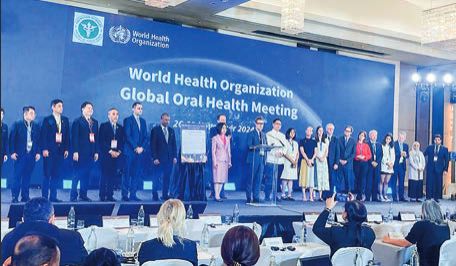
ON the occasion of World Oral Health Day, Regional Director for WHO South-East Asia, Saima Wazed brought attention towards the need for prioritizing oral health to tackle diseases and bring about positive health outcomes in South-East Asia.
“World Oral Health Day, marked annually on 20 March, draws attention to oral health being a key indicator of overall health, well-being and quality of life.
Oral diseases are among the most common noncommunicable diseases worldwide, affecting an estimated 3.5 billion people,” Wazed said.
ON the occasion of World Oral Health Day, Regional Director for WHO South-East Asia, Saima Wazed brought attention towards the need for prioritizing oral health to tackle diseases and bring about positive health outcomes in South-East Asia.
“World Oral Health Day, marked annually on 20 March, draws attention to oral health being a key indicator of overall health, well-being and quality of life.
Oral diseases are among the most common noncommunicable diseases worldwide, affecting an estimated 3.5 billion people,” Wazed said.
She noted that the World Health Organization is calling on the countries of the South-East Asia Region and partners for accelerated action, reiterating the commitments of the Bangkok Declaration “No Health Without Oral Health”, adopted at the WHO Global Oral Health Meeting in November 2024. She noted that oral diseases and conditions cause physical symptoms, functional limitations, and a detrimental impact on emotional, mental and social well-being. Among the six WHO regions, South-East Asia reports the highest number — approximately 900 million cases of oral diseases and conditions — reflecting the region’s large population. Our region also has the highest burden of oral cancer among all WHO regions. — ANI
Source: The Global New Light of Myanmar
ON the occasion of World Oral Health Day, Regional Director for WHO South-East Asia, Saima Wazed brought attention towards the need for prioritizing oral health to tackle diseases and bring about positive health outcomes in South-East Asia.
“World Oral Health Day, marked annually on 20 March, draws attention to oral health being a key indicator of overall health, well-being and quality of life.
Oral diseases are among the most common noncommunicable diseases worldwide, affecting an estimated 3.5 billion people,” Wazed said.
She noted that the World Health Organization is calling on the countries of the South-East Asia Region and partners for accelerated action, reiterating the commitments of the Bangkok Declaration “No Health Without Oral Health”, adopted at the WHO Global Oral Health Meeting in November 2024. She noted that oral diseases and conditions cause physical symptoms, functional limitations, and a detrimental impact on emotional, mental and social well-being. Among the six WHO regions, South-East Asia reports the highest number — approximately 900 million cases of oral diseases and conditions — reflecting the region’s large population. Our region also has the highest burden of oral cancer among all WHO regions. — ANI
Source: The Global New Light of Myanmar
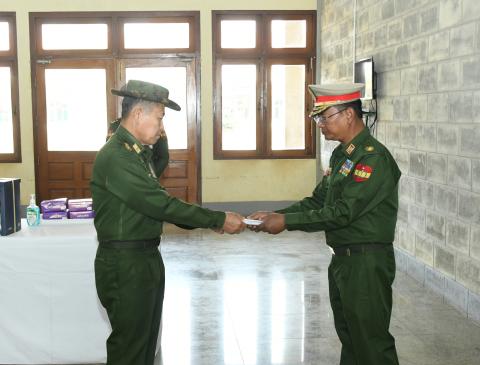
NAY PYI TAW March 19
Vice Chairman of the State Administration Council Deputy Commander-in-Chief of Defence Services Commander in-Chief (Army) Vice-Senior General Soe Win, accompanied by Shan State Chief Minister U Aung Aung, senior military officers from the Office of the Commander-in-Chief, the Commander of the Eastern Command, and other res ponsible officials, visited and delivered words of encouragement to officers, other ranks, and members of the People's Militia (Local) who are receiving treatment at the military hospital in Aungban Town, Shan State (South), this morning.
First, the Vice-Senior General and party arrived at the local military hospital in Aungban Town, where they were welcomed and greeted by the hospital commandant, military medical officers, and responsible officials.
Subsequently, the commandant briefed the Vice-Senior General on the current healthcare services provided to officers, other ranks, members of the People's Militia (Local), and local civilians, as well as other necessary requirements, in the hospital's conference hall. The Vice-Senior General provided guidance and addressed the necessary needs.
Following this, the Vice-Senior General and his entourage individually inquired about the health conditions of the officers, other ranks, and members of the People's Militia (Local) who were injured while performing national defence and security duties and are now receiving treatment at the hospital. They offered words of encouragement and provided food.
Similarly, the wife of the Vice-Senior General, Daw Than Than Nwe, and her entourage visited the women and children's ward, where they met with patients receiving treatment, offered words of encouragement, and distributed food.
Later, the Vice-Senior General presented gifts and cash rewards to the healthcare staff serving at the hospital, which were received by the responsible officials.
Source: https://myawady.net.mm/
NAY PYI TAW March 19
Vice Chairman of the State Administration Council Deputy Commander-in-Chief of Defence Services Commander in-Chief (Army) Vice-Senior General Soe Win, accompanied by Shan State Chief Minister U Aung Aung, senior military officers from the Office of the Commander-in-Chief, the Commander of the Eastern Command, and other res ponsible officials, visited and delivered words of encouragement to officers, other ranks, and members of the People's Militia (Local) who are receiving treatment at the military hospital in Aungban Town, Shan State (South), this morning.
First, the Vice-Senior General and party arrived at the local military hospital in Aungban Town, where they were welcomed and greeted by the hospital commandant, military medical officers, and responsible officials.
Subsequently, the commandant briefed the Vice-Senior General on the current healthcare services provided to officers, other ranks, members of the People's Militia (Local), and local civilians, as well as other necessary requirements, in the hospital's conference hall. The Vice-Senior General provided guidance and addressed the necessary needs.
Following this, the Vice-Senior General and his entourage individually inquired about the health conditions of the officers, other ranks, and members of the People's Militia (Local) who were injured while performing national defence and security duties and are now receiving treatment at the hospital. They offered words of encouragement and provided food.
Similarly, the wife of the Vice-Senior General, Daw Than Than Nwe, and her entourage visited the women and children's ward, where they met with patients receiving treatment, offered words of encouragement, and distributed food.
Later, the Vice-Senior General presented gifts and cash rewards to the healthcare staff serving at the hospital, which were received by the responsible officials.
Source: https://myawady.net.mm/
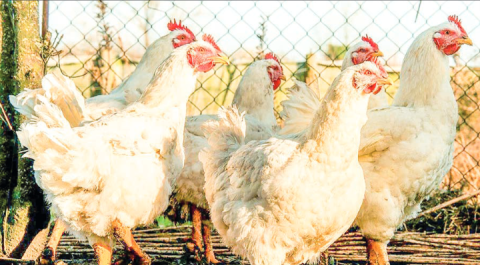
CALIFORNIA authorities have culled 119,000 ducks at a Merced County farm after detecting H5N9 bird flu, a strain confirmed for the first time in US poultry, international health officials report.
A new strain of bird flu has been confirmed at a duck farm in California, the first time the variant has been discovered in poultry in the United States, an international agency said.
CALIFORNIA authorities have culled 119,000 ducks at a Merced County farm after detecting H5N9 bird flu, a strain confirmed for the first time in US poultry, international health officials report.
A new strain of bird flu has been confirmed at a duck farm in California, the first time the variant has been discovered in poultry in the United States, an international agency said.
A report by the World Organization for Animal Health (WOAH), which AFP saw on Tuesday, said “highly pathogenic avian influenza (HPAI) H5N9” had been confirmed in a commercial duck premise in Merced County, California.
“This is the first confirmed case of HPAI H5N9 in poultry in the United States,” said Paris-based WOAH, which monitors animal diseases worldwide.
It said the outbreak, whose origin was unknown, was confirmed on 13 January and all 119,000 poultry at the farm in question had been culled.
The H5N1 strain of bird flu, which is widespread among animals in the United States, was also registered at the farm. US animal health officials were conducting “comprehensive epidemiological investigations” and had increased surveillance in response to the outbreak, the WOAH said.
The emergence of the new strain of bird flu in the United States comes at a time when President Donald Trump has decided to withdraw the country from the World Health Organization (WHO).
The US is the largest donor to the United Nations health agency, which coordinates the worldwide response to health emergencies.
Health experts have been sounding the alarm about the potential pandemic threat to humans posed by bird flu, which has been showing signs of mutating as it spreads among cows and infects people in the United States.
They have for months been urging US authorities to increase surveillance and share more information about its bird flu outbreak.
If the US and the WHO no longer cooperate and share critical data, tracking the spread of viruses internationally will be more difficult.
The US withdrawal is “a concern for global health”, the WHO said last week.
Sixty-seven people in the United States have contracted bird flu, one of whom died in early January, the US Centres for Disease Control and Prevention said this week.
These cases were caused by direct exposure to a sick animal and the WHO has stressed that, to date, no human-to-human transmission has been reported. But scientists have raised fears that if a person becomes infected with both bird flu and seasonal flu, the bird flu virus could mutate into a strain that is contagious between humans and potentially trigger a human pandemic._AFP
Source: The Global New Light of Myanmar
CALIFORNIA authorities have culled 119,000 ducks at a Merced County farm after detecting H5N9 bird flu, a strain confirmed for the first time in US poultry, international health officials report.
A new strain of bird flu has been confirmed at a duck farm in California, the first time the variant has been discovered in poultry in the United States, an international agency said.
A report by the World Organization for Animal Health (WOAH), which AFP saw on Tuesday, said “highly pathogenic avian influenza (HPAI) H5N9” had been confirmed in a commercial duck premise in Merced County, California.
“This is the first confirmed case of HPAI H5N9 in poultry in the United States,” said Paris-based WOAH, which monitors animal diseases worldwide.
It said the outbreak, whose origin was unknown, was confirmed on 13 January and all 119,000 poultry at the farm in question had been culled.
The H5N1 strain of bird flu, which is widespread among animals in the United States, was also registered at the farm. US animal health officials were conducting “comprehensive epidemiological investigations” and had increased surveillance in response to the outbreak, the WOAH said.
The emergence of the new strain of bird flu in the United States comes at a time when President Donald Trump has decided to withdraw the country from the World Health Organization (WHO).
The US is the largest donor to the United Nations health agency, which coordinates the worldwide response to health emergencies.
Health experts have been sounding the alarm about the potential pandemic threat to humans posed by bird flu, which has been showing signs of mutating as it spreads among cows and infects people in the United States.
They have for months been urging US authorities to increase surveillance and share more information about its bird flu outbreak.
If the US and the WHO no longer cooperate and share critical data, tracking the spread of viruses internationally will be more difficult.
The US withdrawal is “a concern for global health”, the WHO said last week.
Sixty-seven people in the United States have contracted bird flu, one of whom died in early January, the US Centres for Disease Control and Prevention said this week.
These cases were caused by direct exposure to a sick animal and the WHO has stressed that, to date, no human-to-human transmission has been reported. But scientists have raised fears that if a person becomes infected with both bird flu and seasonal flu, the bird flu virus could mutate into a strain that is contagious between humans and potentially trigger a human pandemic._AFP
Source: The Global New Light of Myanmar

Everybody, Mingalaba!
First of all, I would like to extend my greetings and best wishes to all the distinguished guests attending today’s “53rd Myanmar Health Research Congress,” wishing you all peace of mind, good health, and prosperity in every aspect.
The Myanmar Health Re-search Congress has been held for 53 times to conduct health research of Myanmar keeping abreast of other countries.
Everybody, Mingalaba!
First of all, I would like to extend my greetings and best wishes to all the distinguished guests attending today’s “53rd Myanmar Health Research Congress,” wishing you all peace of mind, good health, and prosperity in every aspect.
The Myanmar Health Re-search Congress has been held for 53 times to conduct health research of Myanmar keeping abreast of other countries.
The first congress was successfully held in 1965. During the early years of the congress, only research papers were submitted. However, starting from the health research congress held in 1991, research poster exhibitions were introduced. From the 2002 congress onwards, subject-wise seminars were also incorporated, making the congresses more impactful and extensive.
Research findings based on solid and reliable results emerging from health-related research congresses are instrumental in formulating modern and appropriate health policies for the nation. They also play a significant role in enhancing the effectiveness of healthcare initiatives, ensuring accessible and quality healthcare for everyone, and driving large-scale processes aimed at improving overall public health outcomes.
The theme for the 53rd Myanmar Health Research Congress is reported to be: "Moving forward to a healthy lifestyle and addressing health risk behaviors." It aims to shed light on the growing significance of non-communicable diseases in the current context.
The Ministry of Health, in collaboration with relevant ministries, effectively implemented measures to prevent, control, and treat diseases during the COVID-19 pandemic. Currently, with the aim of controlling the rise of non-communicable diseases, the World Health Organization (WHO) is working together with the Department of Public Health, the Department of Medical Services, the Department of Human Resources for Health, and the Department of Medical Research under the Ministry of Health. They are conducting the "STEP Survey 2024," a study to assess the prevalence of non-communicable diseases in Myanmar.
Especially, it is essential for our people to maintain good basic health and live long, healthy, and resilient lives. To achieve this, it is necessary to promote the selection and consumption of nutritious and health- conscious foods, as well as to encourage health-conscious lifestyles and behaviors. This involves advancing practical health research related to these areas, widely disseminating the findings to the public, and providing knowledge to raise awareness.
Regarding traditional medicine, it is essential to collaborate with senior traditional medicine practitioners and the Department of Traditional Medicine to conduct practical research. This will ensure tangible benefits for the public, strengthen the foundation of our country's traditional medical practices, and enable traditional medicine products to penetrate the inter-national market by generating more reliable and robust re-search-based data.
It is essential to make decisions and formulate health policies based on accurate and reliable research findings. Therefore, researchers conducting these studies must fully under-stand the significance of their findings and consistently adhere to research ethics. This aware-ness and commitment are crucial at all times.
In our country, it is essential to foster a mindset of thoroughly exploring, studying, and con-ducting research before under-taking any activities. This means encouraging the emergence of young people and intellectuals with a passion for research. We need to take action to ensure the development of individuals who are committed to research in accordance with ethical standards. To achieve this, efforts should be made to establish a thriving research culture in the country, with numerous researchers emerging. This includes systematically reorganizing research advisory committees and enhancing the structure of research ethics boards as needed. Such measures are necessary to promote the growth and sustainability of a research-oriented culture.
The organizing committee for the congress has categorized the research papers submitted into three systematic categories: fundamental research papers, applied research papers, and papers on social and healthcare systems. The committee has reviewed and selected these sub-missions to ensure they are suitable for presentation during the congress. It has been planned to present 54 research papers and display 43 posters as part of the event.
It is known that the award selection committee has re-viewed and chosen the best papers and posters from those submitted to this conference, and there are plans to present awards to recognize and honor them appropriately.
In conclusion, I would like to express my best wishes for success in these efforts to conduct research.
- When conducting health research, prioritize the public's benefit by improving the overall health standards of the people. Focus on basic healthcare improvement, promoting healthy living and nutrition, understanding the nature of communicable and non-communicable diseases, and taking proactive measures for prevention. Increase practical research, traditional medicine studies, and interna-tional research collaborations to advance these goals.
- The research findings should also be shared with the public in a timely manner through activities such as organizing congresses, publishing research journals, and releasing magazines, in order to inform and alert the public accordingly.
- Similarly, when the public attends and receives treatment at people’s hospitals, efforts should be made to ensure the provision of care that guarantees mental well-being, patient safety, and high-quality medical services. Practical research activities related to medical treatment and hospital management should be enhanced to achieve these objectives.
- Through health research activities, may we be able to adopt health policies suitable for our country, ensure that everyone has access to high-quality healthcare, and work towards improving the level of healthcare in our country.
Thank you, all.
Everybody, Mingalaba!
First of all, I would like to extend my greetings and best wishes to all the distinguished guests attending today’s “53rd Myanmar Health Research Congress,” wishing you all peace of mind, good health, and prosperity in every aspect.
The Myanmar Health Re-search Congress has been held for 53 times to conduct health research of Myanmar keeping abreast of other countries.
The first congress was successfully held in 1965. During the early years of the congress, only research papers were submitted. However, starting from the health research congress held in 1991, research poster exhibitions were introduced. From the 2002 congress onwards, subject-wise seminars were also incorporated, making the congresses more impactful and extensive.
Research findings based on solid and reliable results emerging from health-related research congresses are instrumental in formulating modern and appropriate health policies for the nation. They also play a significant role in enhancing the effectiveness of healthcare initiatives, ensuring accessible and quality healthcare for everyone, and driving large-scale processes aimed at improving overall public health outcomes.
The theme for the 53rd Myanmar Health Research Congress is reported to be: "Moving forward to a healthy lifestyle and addressing health risk behaviors." It aims to shed light on the growing significance of non-communicable diseases in the current context.
The Ministry of Health, in collaboration with relevant ministries, effectively implemented measures to prevent, control, and treat diseases during the COVID-19 pandemic. Currently, with the aim of controlling the rise of non-communicable diseases, the World Health Organization (WHO) is working together with the Department of Public Health, the Department of Medical Services, the Department of Human Resources for Health, and the Department of Medical Research under the Ministry of Health. They are conducting the "STEP Survey 2024," a study to assess the prevalence of non-communicable diseases in Myanmar.
Especially, it is essential for our people to maintain good basic health and live long, healthy, and resilient lives. To achieve this, it is necessary to promote the selection and consumption of nutritious and health- conscious foods, as well as to encourage health-conscious lifestyles and behaviors. This involves advancing practical health research related to these areas, widely disseminating the findings to the public, and providing knowledge to raise awareness.
Regarding traditional medicine, it is essential to collaborate with senior traditional medicine practitioners and the Department of Traditional Medicine to conduct practical research. This will ensure tangible benefits for the public, strengthen the foundation of our country's traditional medical practices, and enable traditional medicine products to penetrate the inter-national market by generating more reliable and robust re-search-based data.
It is essential to make decisions and formulate health policies based on accurate and reliable research findings. Therefore, researchers conducting these studies must fully under-stand the significance of their findings and consistently adhere to research ethics. This aware-ness and commitment are crucial at all times.
In our country, it is essential to foster a mindset of thoroughly exploring, studying, and con-ducting research before under-taking any activities. This means encouraging the emergence of young people and intellectuals with a passion for research. We need to take action to ensure the development of individuals who are committed to research in accordance with ethical standards. To achieve this, efforts should be made to establish a thriving research culture in the country, with numerous researchers emerging. This includes systematically reorganizing research advisory committees and enhancing the structure of research ethics boards as needed. Such measures are necessary to promote the growth and sustainability of a research-oriented culture.
The organizing committee for the congress has categorized the research papers submitted into three systematic categories: fundamental research papers, applied research papers, and papers on social and healthcare systems. The committee has reviewed and selected these sub-missions to ensure they are suitable for presentation during the congress. It has been planned to present 54 research papers and display 43 posters as part of the event.
It is known that the award selection committee has re-viewed and chosen the best papers and posters from those submitted to this conference, and there are plans to present awards to recognize and honor them appropriately.
In conclusion, I would like to express my best wishes for success in these efforts to conduct research.
- When conducting health research, prioritize the public's benefit by improving the overall health standards of the people. Focus on basic healthcare improvement, promoting healthy living and nutrition, understanding the nature of communicable and non-communicable diseases, and taking proactive measures for prevention. Increase practical research, traditional medicine studies, and interna-tional research collaborations to advance these goals.
- The research findings should also be shared with the public in a timely manner through activities such as organizing congresses, publishing research journals, and releasing magazines, in order to inform and alert the public accordingly.
- Similarly, when the public attends and receives treatment at people’s hospitals, efforts should be made to ensure the provision of care that guarantees mental well-being, patient safety, and high-quality medical services. Practical research activities related to medical treatment and hospital management should be enhanced to achieve these objectives.
- Through health research activities, may we be able to adopt health policies suitable for our country, ensure that everyone has access to high-quality healthcare, and work towards improving the level of healthcare in our country.
Thank you, all.
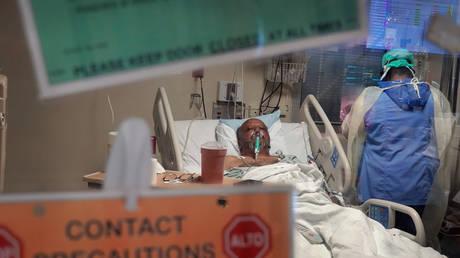
Antimicrobial resistance could claim 40 million lives by 2050 if left unchecked, UK Special Envoy on AMR and England’s former chief medical officer, Sally Davies, told the Observer on Sunday.
Antimicrobial resistance(AMR) occurs when bacteria, viruses and other types of germs become stronger than the medications used to treat them – creating so-called “superbugs. ”As a result, targeted infections become difficult or impossible to treat.
Antimicrobial resistance could claim 40 million lives by 2050 if left unchecked, UK Special Envoy on AMR and England’s former chief medical officer, Sally Davies, told the Observer on Sunday.
Antimicrobial resistance(AMR) occurs when bacteria, viruses and other types of germs become stronger than the medications used to treat them – creating so-called “superbugs. ”As a result, targeted infections become difficult or impossible to treat.
Speaking to the Observer, Davies described AMR as a growing “antibiotic emergency” that threatens routine medical procedures like surgery and childbirth, and which could become life-threatening.
AMR is responsible for approximately one million deaths annually, but that figure is set to double by 2050, according to Davies. Older populations are particularly vulnerable, with mortality rates for people over 70 increasing by 80 percent since 1990, she added.
Despite efforts to limit antibiotic prescriptions and misuse, about 70 percent of all existing antibiotics are used in livestock globally, creating reservoirs of resistant bacteria.
“We’re essentially throwing antibiotics at cows and chickens and sheep as cheap alternatives to giving them growth promoters or prophylactics to prevent the spread of disease,” Davies said. “If you’ve got intensive farming where a lot of antibiotics are used or a busy hospital that has a poor sewage system, resistant bacteria can get into waterways."
The bacteria evolve quickly, multiplying every 20 minutes, and can travel via winds and rain, further complicating containment. “They also mutate a great deal, and if they do so in the presence of antibiotics and that mutation protects them, these strains will multiply, ” Davies explained to the Observer. RTR
Source: Myawady Daily Newspaper
Antimicrobial resistance could claim 40 million lives by 2050 if left unchecked, UK Special Envoy on AMR and England’s former chief medical officer, Sally Davies, told the Observer on Sunday.
Antimicrobial resistance(AMR) occurs when bacteria, viruses and other types of germs become stronger than the medications used to treat them – creating so-called “superbugs. ”As a result, targeted infections become difficult or impossible to treat.
Speaking to the Observer, Davies described AMR as a growing “antibiotic emergency” that threatens routine medical procedures like surgery and childbirth, and which could become life-threatening.
AMR is responsible for approximately one million deaths annually, but that figure is set to double by 2050, according to Davies. Older populations are particularly vulnerable, with mortality rates for people over 70 increasing by 80 percent since 1990, she added.
Despite efforts to limit antibiotic prescriptions and misuse, about 70 percent of all existing antibiotics are used in livestock globally, creating reservoirs of resistant bacteria.
“We’re essentially throwing antibiotics at cows and chickens and sheep as cheap alternatives to giving them growth promoters or prophylactics to prevent the spread of disease,” Davies said. “If you’ve got intensive farming where a lot of antibiotics are used or a busy hospital that has a poor sewage system, resistant bacteria can get into waterways."
The bacteria evolve quickly, multiplying every 20 minutes, and can travel via winds and rain, further complicating containment. “They also mutate a great deal, and if they do so in the presence of antibiotics and that mutation protects them, these strains will multiply, ” Davies explained to the Observer. RTR
Source: Myawady Daily Newspaper

